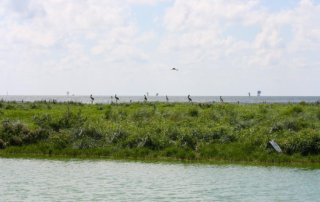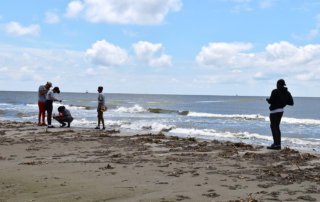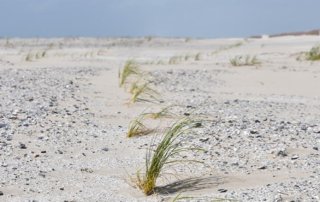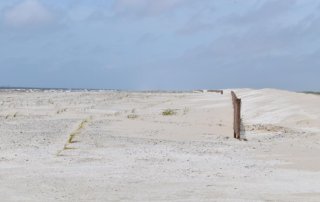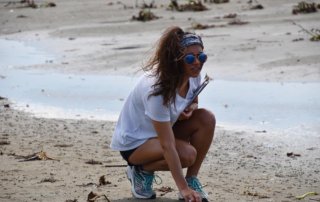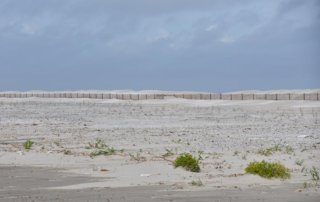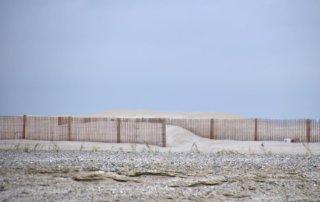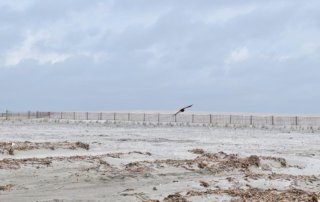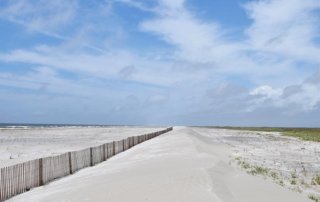 Along the southernmost portion of Barataria-Terrebonne are numerous barrier islands and headland beaches, many of which are accessible only by boat.
Along the southernmost portion of Barataria-Terrebonne are numerous barrier islands and headland beaches, many of which are accessible only by boat.
Barrier islands are the old shorelines of an eroding delta and are important barriers to storm surge waters from storms. With their fine sand beaches, low dunes, shallow nearshore waters, deep passes, and back-barrier marshes, the islands protect coastal bays from waves and storm surges. Juvenile fish seek refuge in the shallows behind the barrier islands. These sand-bottomed areas are unique to barrier islands and are prime feeding grounds for anchovies, menhaden, mullet, shrimp, crabs, and other finfish and shellfish. During warm months redfish are found in the deep passes preparing for a fall spawn and speckled trout search the surf for small fish.
The beaches, mudflats, and adjacent Gulf and bay waters form a relatively narrow ribbon of habitats that are extremely important to many species of birds that pass through on their long migratory journey, including shorebirds such as Wilson’s and snowy plovers, willets, sanderlings, red knots, and threatened piping plovers. These areas are also important to colonial water birds, among which are laughing gulls, least and Foster’s terns, and important rookeries for endangered brown pelicans. The barrier islands and headland beaches are used not only as staging and “refueling” areas for migrants but also as nesting sites for other common birds such as royal and caspian terns, black-necked stilts, roseate spoonbills, great and snowy egrets, tricolored herons, and black skimmers.
Common plants found on barrier beaches and mudflats include bitter panicum, marshhay cordgrass, saltwort, bushy sea-oxeye, black mangrove, saltgrass, and smooth cordgrass. Raccoons, coyotes, and diamondback terrapins can be found here.


